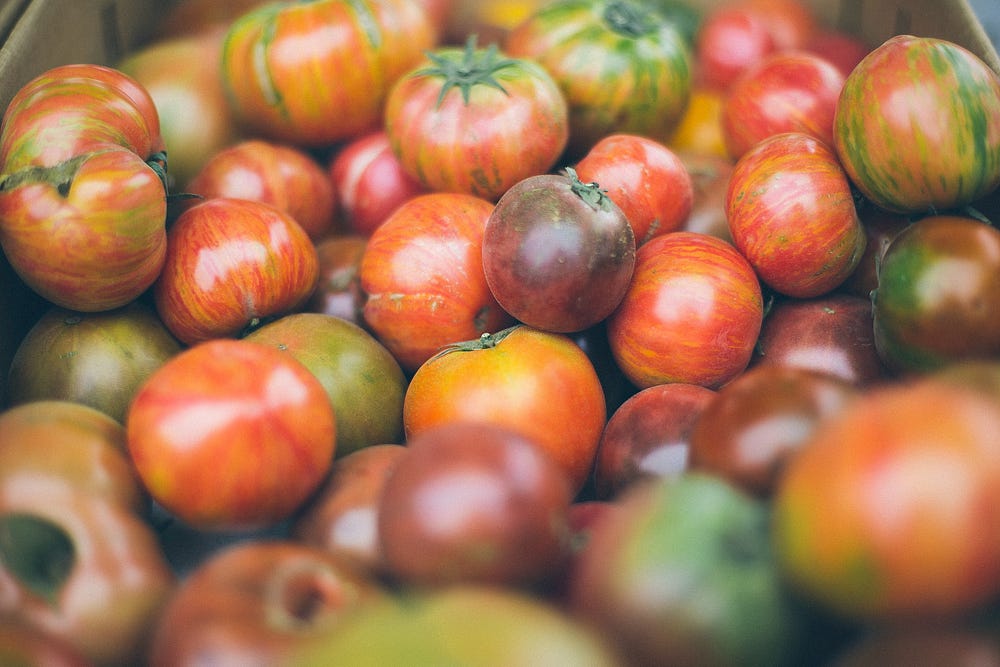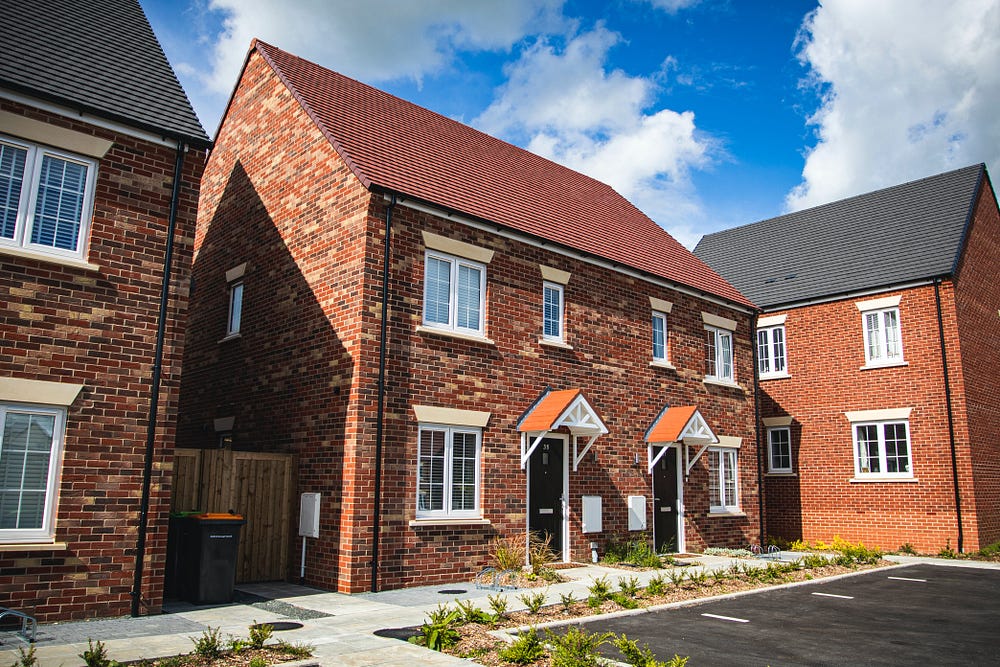WHEN STANDARDISATION IS THE ENEMY OF LIFE
One of Life’s key design principles is Uniqueness. We can see this Uniqueness through nature’s pattern literacy. There are only a handful of forms that appear throughout time in nature — waves, streamlines, clouds, spirals, scatters, branches, nets, and tesselation. But there are infinite variations on those key forms. A snowflake is always a five pointed star which is in fact a net. Yet no two snowflakes are alike. Every snowflake that has ever fallen, every snowflake that will ever fall, is a unique variation on the 5-pointed star. Every human has a set of fingerprints. Yet every fingerprint on every human is entirely unique.
Life also designs through a series of interconnected interdependent systems, at a scale that is both bioregional and ecosystemic. Bioregions and ecosystems are the form. However, each bioregion and ecosystem has its own unique biological, ecological, and cultural qualities; its own unique variation. Their own unique patterns through time. The Sea of Marmara is not the Mediterranean. Siberian rainforests are not the Amazon. The islands of the Azores are not like the Stockholm archipelago. New York is not Istanbul.
One of the key tools of the global economy is standardisation. If we standardise anything, we can mass produce at volume which offers the opportunity of economies of scale and therefore greater profit to the producer. Standardisation has enabled most of the global businesses we know to grow into the monoliths we recognise, and enabled them to create millions of jobs worldwide. It has offered much to be grateful for.
In medicine, gold standard treatments for disease are highly valued. ABVD or anthracyline-based chemotherapy which uses doxorubicin, bleomycin, vinblastine and dacarbazine to treat advanced Hodgkins Lymphoma has been the gold standard for almost 40 years because of its equivalent response rate to therapy and progression-free survival (PFS). I know the value of this gold standard from personal experience. It could be argued that because this treatment has been such a standard, and because it is used on a relatively rare form of cancer offering less opportunity for mass use and therefore margin, that means that no improvement upon the therapy has been worked on. It’s a pretty rough experience that leaves a lasting legacy on your body. But I am no less grateful for it.
And yet there are many more instances where standardisation does not ‘create the conditions conducive to life’ to continue on earth, to use once again that great phrase bequeathed to the world by the wonderful Janine Benyus of The Biomimicry Institute. It is these I want to look at, specifically in relation to Place.
What does standardisation look like in Place and how does it reduce the chances of life?
Standardisation in the high street means that you can find exactly the same shops in Shanghai as you can in London — from Zara to Louis Vuitton. Standardisation in store design means that global brands can optimise consistency of brand but also minimise cost of fittings. Standardisation means growth for those global or national brands who eventually dominate city high streets but over time it means independent, unique, place-based small retailers have been pushed out. It also means we have lost the experience of unique variations and differences of culture that used to be so exciting to discover.
Standardisation in the products sold in those globally available stores also affects size, colour, fabric in fashion. Bras come in seemingly infinite varieties of colour and type and we have a good variety of option of size and cup. Shoes come in equally infinite varieties of colour and design but in standard sizes built on an average foot last. Anyone who has had a bra made to measure or a pair of riding boots designed just for you, or who has awkward feet with bunions will know the sheer joy of custom made design vs what looks at first glance like infinite variety but actually hides some form of standardisation!
Standardisation in our food systems is less easy to see. Let’s take the humble tomato. When you walk into any national supermarket there are hundreds, if not thousands, of products that contain tomatoes from ready meals to pasta sauce. Over decades, in order to produce consistency (sameness) of taste, consistency of supply (there will always be tomatoes somewhere in the world) and longevity of shelf life, fewer and fewer tomato varieties have been used. Those that are used have been genetically adapted so that they grow faster and have tougher skins which last longer. The sacrifice? Nutrient density and taste. The average tomato you buy in a supermarket tastes like cardboard, especially in Winter.

But standardisation goes much further in this field. To increase production of any given product, agriculture standardises through mono cropping. Vast swathes of corn, wheat, palm oil trees, soya plantations replace diverse rainforests in order to supply consistent volume. Vast numbers of standardised chickens designed to grow at a rapid rate, huge livestock fattening lots stuffed full of the same breed of cattle without shade or grass fed on the soya and palm oil from mono cropped plantations far away, standardise the way of producing the meat we crave at the cheapest possible price.
The price paid? Massive loss of biodiversity on a global scale which is now threatening the stability of ecosystems worldwide. Huge depletion of soil fertility through mono cropping and artificial fertilisers. Loss of diverse and rare breeds of livestock in favour of the most hardy and easiest to rear. Loss of habitat as large areas of pristine forest are razed to the ground to make way for mass mono cropping or livestock pens.

Low nutrient density base commodities which require additives of all kinds to preserve longevity and to create taste, which have a downstream impact on human health. Not to mention the billions of farmed animals who live and die in misery.
Standardisation in house building means that a developer knows exactly how many square feet to allocate to a bedroom, a living room and a garden; exactly which mix of 2 bedroom, 3 bedroom and executive homes will provide the maximum return from a new development; exactly how little green space they have to provide to meet national requirements (which of course vary around the world).

The design is not done for maximum quality of life for humans or diversity of other life, but first and foremost for profit. The result? Postage stamp gardens in which there is no space to grow food or for children to play; standard interiors which are monotonously similar; rooms which are too small in which to do a forward roll; just enough trees planted to meet approval and a few hedgehog holes.
Standardisation in education has in the past often meant that children who fall outside the parameters of the ‘average’ child, have less chance to thrive. Children who do not respond well to the pressure of education systems design for short-term performance through tests and exams, tend to struggle. Many education systems have been addressing these shortcomings by designing multi-faceted learning programmes where practical participation, learning through doing, and blended learning are combined. Yet the standard approach to developing and validating a new degree or masters course hasn’t changed much and means that universities are less agile and less able to adapt to rapid change than independent organisations.
Standardisation in global tourism gave us mass tourism by numbers. It gave us neat little rows of caravans tightly packed in to maximise visitor numbers, and hotel rooms that all looked the same so you could know just what to expect from a brand.


Larger and larger monolithic cruise ships were built with standard size cabins and of course standard luxury cabins that could carry more and more passengers. Of course it brought us generation Easyjet. Many of us have enjoyed the benefits of a quick weekend getaway to some new untested city.
In business we still seek the holy grail of ‘best practice’ as a way of standardising approaches to maximise efficiency and productivity. I was recently invited into an EU project to create multiple circular and smart cities across Europe. The first thing they looked for was to share best practice across a diverse range of places without considering that what a circular or smart city might look like in Greece might in fact be more effective if done slightly differently than in Germany or the Netherlands.
What’s the alternative? Is there a better blend of standardisation and uniqueness?
Many ecologists, scientists and even some politicians and economists (!) argue that re-localisation in some form needs to happen to reduce the negative impact of globalisation. I have long believed that to be true. But re-localisation and recognition of unique properties of place does not have to mean zero business or employment. It just needs a recalibration of expectations of what it might offer in terms of lifestyle and profit.
Less than 5 minutes from me on Hoyle Farm owned by Bianca and James Pitt, a dynamic young couple, Brett & Kathy, have set up Slow Grown Farm. Farming on just over 100 acres, they are developing a multi-faceted food business that is wholly localised. They will use rare breed cows, pigs, and sheep which are endangered but hardy animals that can live outdoors and breed, grow and provide high quality, nutrient-dense food if allowed to grow slowly and naturally.



They will be managed in a rotational system to continually improve the soil, moving from grass to small woodland for both shelter and better land management. Brett & Kathy intend to convert existing buildings to house local creamery and smokehouse and are also looking into the possibility of an authorised mobile abattoir to reduce transportation stress on animals. All their food will be produced by animals that exclusively eat local grass, hay and haylage or recycled foodstuffs like whey which is a byproduct of cheese-making that pigs love. Their dairy and meat based products will have the unique flavour of the valley in which they farm. They also have a fully sustainable business model which will keep them and others, in good employment for years to come.
Across the North Sea is Copenhagen. When I was last there I was introduced to a company that makes urban honey. A bright entrepreneur called Oliver Maxwell was given permission to install beehives on the rooftops of Copenhagen’s many apartment blocks in different districts. Each district has different planting; some more trees, some more flowers, others have food plots in the gardens that surround their apartment blocks. Bybi’s honey is produced by neighbourhood. Nørrebro tastes subtly different to Amager Øst. Neighbourhood citizens are proud of their local honey but often keen to try their neighbouring variety. The pollinators are doing well, the gardens are flourishing and a new business is thriving. It also happens to employ refugees helping them to settle in a new land.
In some parts of the world, the construction industry has recognised the significant impact the industry has on emissions and biodiversity loss. It is rapidly galvanising an effort to drive a net zero approach to doing business. Inevitably this means a re-localisation of materials production or redesigning plans to incorporate those materials that are available locally. If not unique to the local bioregion, they will at least be produced locally. If they could additionally plan to grow wood, for example, that would be part of a biodiversity restoration and regeneration project, re-developing lost indigenous species. That would be a further step in the right direction.
We are already seeing a wider diversity of exterior design and shape on some new housing estates, usually at the higher end of cost. Many, such as Thakeham Homes which is local to me in Sussex, are also striving to achieve biodiversity net gain, exploring circular construction methods and designing for renewable energy. The next step for home builders will be to address the equitable relationship between nature and humanity, where there is a real possibility to choose not to build if that is what nature needs and an equitable relationship between profit and use of space through standardisation. This will be challenging.
The Covid pandemic has done more than anything else to bring the impacts of standardisation in tourism to a grinding halt. Cruise ships are anchored empty, neither standard nor standardised luxury cabins filled. Planes are still grounded and air transport is as yet at somewhere between 30–40% of pre covid volume worldwide. It has given breathing space for the industry to grasp the emerging concept of regenerative tourism as part and parcel of regenerative placemaking.
For many years smart hoteliers have recognised the joyful experience visitors may have when they discover that every room in the place is different or themed. This has often been the perquisite of boutique or luxury hotels. Destinations that have been funded by increase in footfall, and therefore relied on growth, have rapidly had to re-evaluate as patterns of travel have shifted and changed. We have noticed how much more pleasant places are when they are not overrun by crowds, and we have learned to seek experiences during lockdown than the packed beaches of Bournemouth or Barcelona have previously offered. The change is not complete, but a pause for reflection is seeing genuine change in the approach of destinations towards strategies where everyone in a place benefits — both hosts and visitors — and the conditions conducive to life improve.
Anywhere we see standardisation, is a potential opportunity for transformation to a world that values long-term life over short-term profit.
Is it time to break our addiction to standardisation and revitalise the value of uniqueness in our business models? If we are to avoid creating products and services that become expensive luxuries out of reach of the wider population, then place-based strategies seem to offer the best chance to serve the conditions of life whilst creating sustainable, life-enhancing businesses that provide purpose and employment.
The Economy of Place is a series of articles by Jenny Andersson that are edited parts of her unpublished book. There are 30 parts to this paper which will be published here in due course. If you would like early notification of future releases, please register at Really Regenerative — Economy of Place.
Many people have helped me shape these narratives. I stand always on the shoulders of giants in regenerative economics and business like Carol Sanford and Kate Raworth, regenerative leaders who understand place such as Pamela Mang, Ben Haggard, Daniel Christian Wahl, but also many anthropologists, ecologists like Joanna Macy, developmental psychologists, bioregionalists, regenerative finance specialists and many others. I know so much less than they. If I ever publish the whole book I will reference you all but my gratitude is not less because I can’t mention you all here.


Recent Comments